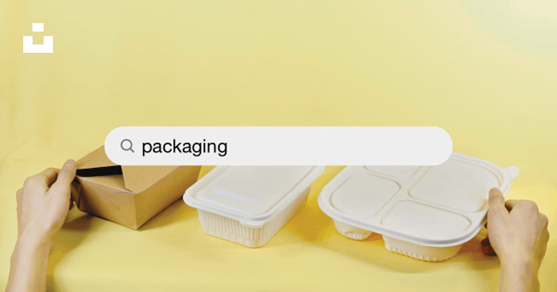Advantages of Using Biodegradable Food Packaging
Biodegradable food packaging offers a range of advantages over traditional packaging materials. Firstly, these materials are made from renewable resources, such as plant-based fibres or starches, making them a more sustainable choice; unlike conventional plastic packaging, which is derived from fossil fuels and takes hundreds of years to decompose, biodegradable packaging breaks down naturally quickly, reducing the burden on our environment.
Secondly, biodegradable packaging is compostable and can be safely added to compost piles or industrial composting facilities. This reduces waste sent to landfills and creates nutrient-rich compost that can be used to grow more plants. Businesses and individuals can actively participate in the circular economy and contribute to a more sustainable food system by choosing biodegradable food packaging.
Another advantage of biodegradable food packaging is its ability to reduce the release of harmful chemicals into the environment. Traditional plastic packaging often contains toxic additives, such as phthalates and bisphenol A (BPA), which can leach into food and pose health risks. In contrast, biodegradable packaging materials are typically free from these harmful substances, ensuring the safety of both consumers and the environment.
Types of Biodegradable Materials for Food Packaging
Biodegradable food packaging can be made from various materials, each with unique properties and applications. Let's take a closer look at some of the most commonly used biodegradable materials for food packaging:
Bioplastics: A Sustainable Alternative for Food Packaging
Bioplastics are biodegradable materials derived from renewable resources, such as cornstarch, sugarcane, or cellulose. These materials have similar properties to traditional plastics, making them a viable alternative for food packaging. Bioplastics can create various packaging products, including bottles, trays, films, and bags.
One of the key advantages of bioplastics is their ability to break down naturally through microbial activity. This means that when bioplastic packaging ends up in a composting facility or even a home compost pile, it degrades into organic matter without releasing harmful toxins. Bioplastics also have a lower carbon footprint than traditional plastics, as they require less energy to produce and emit fewer greenhouse gases during their life cycle.
Compostable Packaging: How It Works and Its Benefits
Compostable packaging is specifically designed to be composted along with organic waste. These materials are made from plant-based fibres, such as bagasse (sugarcane waste), wheat straw, or bamboo, which are renewable and readily available. Compostable packaging breaks into organic matter, carbon dioxide, and water when exposed to the right conditions in a composting environment.
Compostable packaging offers several benefits. Firstly, it helps to divert organic waste from landfills, where it would otherwise produce methane, a potent greenhouse gas. Secondly, compostable packaging can create nutrient-rich compost that can be returned to the soil, improving soil quality and promoting plant growth. Lastly, compostable packaging reduces the need for traditional plastic packaging, which often ends up in our oceans, polluting marine life and ecosystems.
Edible Packaging: Innovations in Sustainable Food Packaging
Edible packaging takes the concept of biodegradability a step further by allowing consumers to eat the packaging along with the food. These innovative materials are often made from natural ingredients, such as seaweed, algae, or starches, and can be used to wrap or encase food products. Edible packaging offers a range of benefits, including reducing waste, enhancing food safety, and providing a unique and enjoyable eating experience.
One example of edible packaging is using edible films or coatings to extend the shelf life of fresh produce. These films create a barrier that protects fruits and vegetables from moisture loss, oxidation, and microbial growth, helping to reduce food waste. Edible packaging also eliminates the need for additional packaging materials, reducing the environmental impact.
Recyclable Packaging Options for Reducing Waste
In addition to biodegradable and compostable packaging, recyclable options can help reduce waste and promote a circular economy. Materials like paper, cardboard, and certain plastics, can be collected, processed, and reused to create new packaging products.
Recyclable packaging is an effective way to minimize the environmental impact of packaging materials. By choosing recyclable options and encouraging recycling practices, businesses and individuals can contribute to reducing waste sent to landfills and conserving natural resources. It is important to note that not all packaging labelled as recyclable is recycled, as proper recycling infrastructure and consumer education are crucial for successful recycling efforts.
Considerations for Choosing the Right Biodegradable Packaging for Your Business
When considering the adoption of biodegradable food packaging for your business, there are several factors to keep in mind. Firstly, it is essential to understand the specific requirements and regulations related to packaging in your industry and region. This will ensure the chosen packaging materials meet all necessary standards and certifications.
Secondly, consider the functionality and durability of the packaging materials. Biodegradable packaging should still be able to protect and preserve the quality of food products effectively. Look for materials that offer the necessary barrier properties, such as resistance to moisture, oxygen, and light, to ensure the integrity of the packaged food.
Lastly, consider the cost and availability of biodegradable packaging materials. While biodegradable options may initially be more expensive than traditional packaging, the long-term environmental benefits and consumer demand may outweigh the upfront costs. Additionally, as the need for biodegradable packaging increases, the availability and affordability of these materials are likely to improve.
Conclusion: Embracing a Greener Future with Biodegradable Food Packaging
Biodegradable food packaging offers a sustainable and environmentally friendly alternative to traditional packaging materials. Biodegradable packaging materials play a crucial role in protecting our planet with their ability to break down naturally and reduce waste in landfills and oceans. From bioplastics and compostable packaging to edible and recyclable options, a wide range of choices are available for businesses and individuals looking to impact the environment positively. By embracing biodegradable food packaging, we can create a greener future and contribute to a healthier and more sustainable world for future generations.
Welcome to Genesis Supplies, the ultimate destination for top-notch, eco-friendly, and environmentally safe cleaning products. We take immense pride in being a well-known distributor in North America, partnering with multiple companies that share our passion for sustainability across the US and Canada. Whether you run a restaurant, hotel, or office space, we've covered all your biodegradable supply needs. You can rest easy knowing that our extensive collection is tailored to meet your every requirement. So why wait? Swing by today and discover the finest selection of green cleaning supplies to make you and Mother Earth happy!



